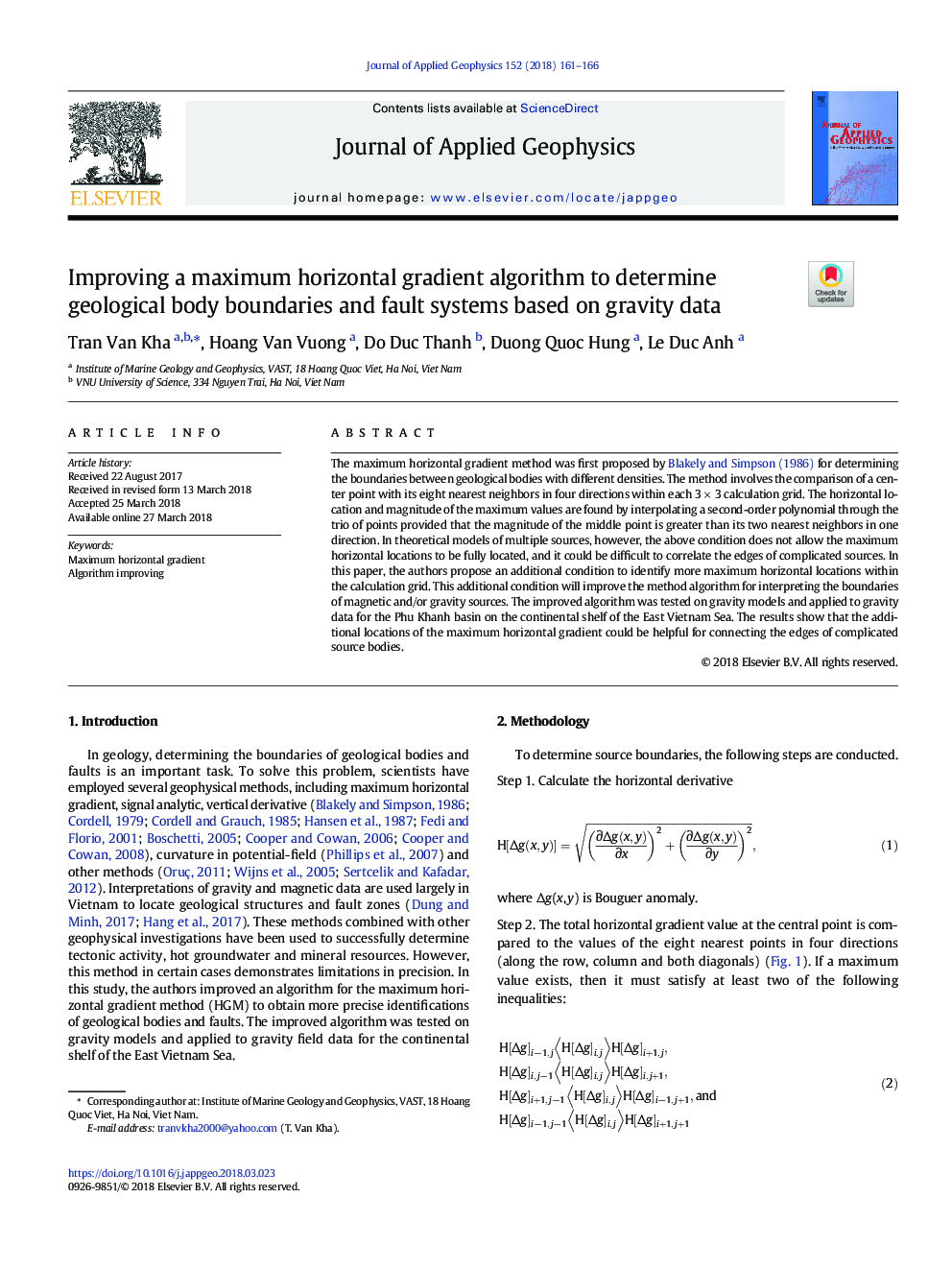| Article ID | Journal | Published Year | Pages | File Type |
|---|---|---|---|---|
| 8915417 | Journal of Applied Geophysics | 2018 | 6 Pages |
Abstract
The maximum horizontal gradient method was first proposed by Blakely and Simpson (1986) for determining the boundaries between geological bodies with different densities. The method involves the comparison of a center point with its eight nearest neighbors in four directions within each 3Â ÃÂ 3 calculation grid. The horizontal location and magnitude of the maximum values are found by interpolating a second-order polynomial through the trio of points provided that the magnitude of the middle point is greater than its two nearest neighbors in one direction. In theoretical models of multiple sources, however, the above condition does not allow the maximum horizontal locations to be fully located, and it could be difficult to correlate the edges of complicated sources. In this paper, the authors propose an additional condition to identify more maximum horizontal locations within the calculation grid. This additional condition will improve the method algorithm for interpreting the boundaries of magnetic and/or gravity sources. The improved algorithm was tested on gravity models and applied to gravity data for the Phu Khanh basin on the continental shelf of the East Vietnam Sea. The results show that the additional locations of the maximum horizontal gradient could be helpful for connecting the edges of complicated source bodies.
Related Topics
Physical Sciences and Engineering
Earth and Planetary Sciences
Geophysics
Authors
Tran Van Kha, Hoang Van Vuong, Do Duc Thanh, Duong Quoc Hung, Le Duc Anh,
